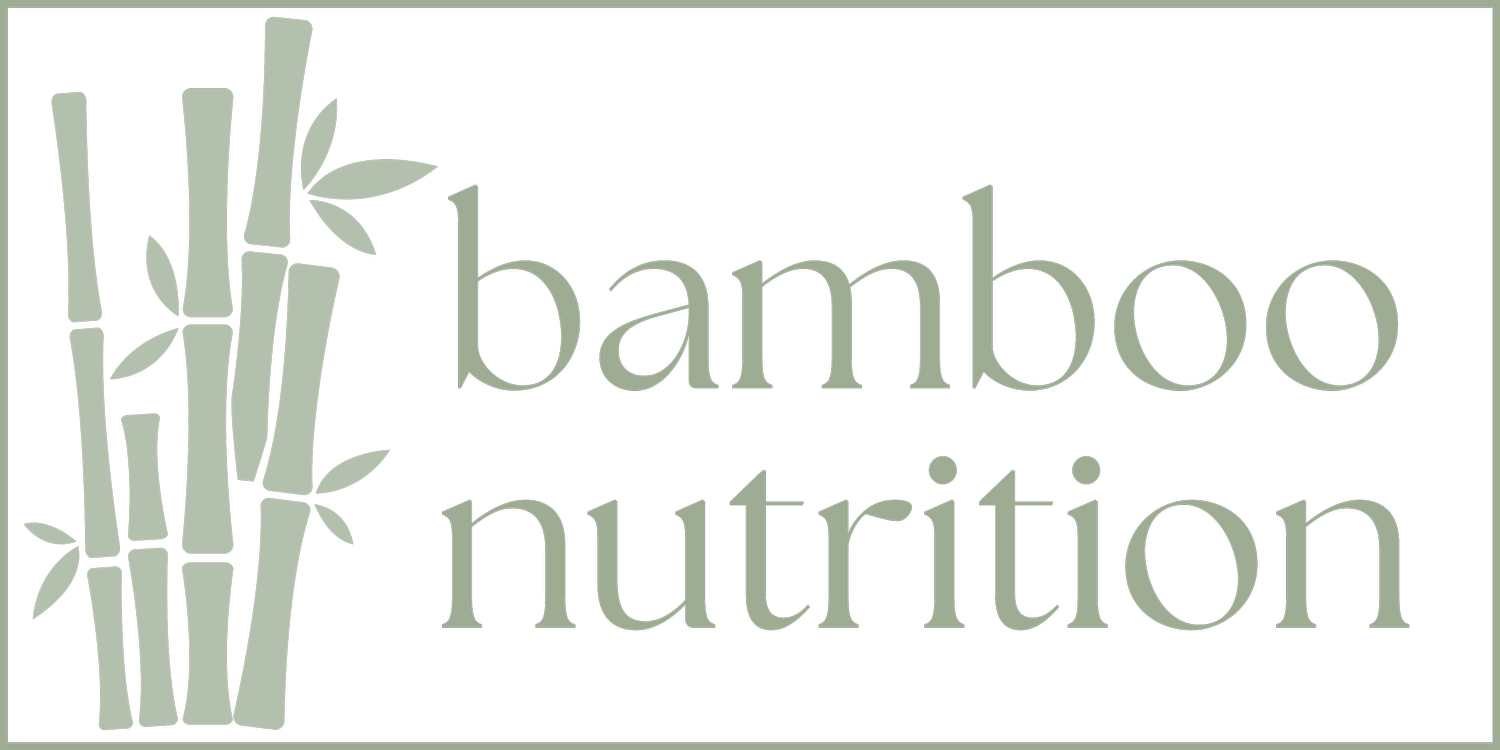Julia Henry at Bamboo Nutrition does Snack With A Dietitian and shares tips and tricks on meal planning.
When you think of a registered dietitian, meal planning might be one of the first things that comes to mind for you. However, at Bamboo Nutrition, we rarely hand someone a strict or specific meal plan. Rather, we work with individuals to identify what works for them as individuals. What are foods you have access to? What are your cooking/prep abilities? What do you like or not like? What are your health goals, etc. Many of these questions take place conversationally. Registered dietitians can provide guidance and information in more ways than just handing the client a piece of paper.
Its okay to want a meal plan from a dietitian. Many individuals are afraid to tackle nutrition on their own. That’s where we come into play! We brainstorm things with our clients and offer guidance through conversation. You are capable of a lot more than you think! We believe our role is to help our clients learn how to plan their own meals and build those skills on their own, so when the day comes that we are no longer working together, it is fairly simple to implement and continue with these skills.
Meal planning is one of those things that we get a lot of questions about from clients. Some people really enjoy the process, and others just want to get it done. I fall somewhere in between. When I’m really busy and in a bit of a food rut, I just want to get it figured out or might stick with tried and true recipes. When I’m craving something specific or wanting to try something new, meal planning is fun and exciting. Can you relate? There are lots of different ways to figure out what you’re going to eat. Some people plan for 1-2 weeks at a time. Some plan for a whole month! Others know they will realistically only make 1 or 2 meals a week and so they just plan for those. Whatever works best for you, here are some simple tips to make meal planning easier.
1. Think of your plate as a puzzle.
Have you seen the MyPlate image? If you have kids you probably have, as it is the way they are taught about nutrition at school. The image looks like a puzzle, divided up by the following food groups: grains/starches, protein, fruits, vegetables and dairy. The goal of the image is to help people visualize what their plate would look like if it included all the food groups.
2. Focus on food groups.
Speaking of food groups, do you eat all of them? While many people do, some people don’t include dairy or meat, and that’s okay. Everyone’s needs are different, and the plate can be modified accordingly. If you don’t include these, consider substituting dairy alternatives such as soy, almond or oat milk products for the dairy group. And remember that there are other sources of protein besides meat, such as beans, nuts and eggs. When choosing grains and starches, including whole grains as much as possible helps to increase fiber and protein intake, as well as provide B vitamins and other important nutrients. Fruits and veggies round out the plate for a dose of color, texture and flavor, not to mention all the great nutrients they provide too.
3. Choose a variety of foods over time.
It can be very easy to think we need to include all the food groups at each meal, however this can make meal planning overwhelming and tedious. Bonus points if you can get all of them in 1 meal, but it is absolutely not necessary. I usually recommend trying to get at least 3 of the food groups in a meal, and include the other food groups in snacks throughout the day if possible. And remember, it’s not about eating perfectly. It’s about getting enough variety over a period of time. A single day or even a week is not going to make or break your health. Our bodies know what they’re doing!
Here are some examples of meals that do include all the food groups, just in case you do want to do this and need some ideas.
Salad with any veggies you like, meat and/or cheese, dried cranberries or other fruit, your favorite dressing and whole grain crackers or toast
Snack plate-you can use any combination of meats, cheese, crackers or breads, nuts, raw veggies and fruit with dip
Grilled cheese sandwich with vegetable or tomato soup and fruit on the side
Tuna or chicken salad sandwich on whole grain bread with a glass of milk. You can incorporate the veggies (celery, green onions, etc) and fruit (grapes, dried fruits) into the salad or choose to eat them on the side.
Shredded pork tacos with mango or peach salsa sprinkled with cheese
Happy meal planning and, more importantly, happy eating!
Bamboo Nutritionionrd.com offers Snack With A Dietitian on Instagram every Tuesday between 10-11am. During these lives, our dietitians share practical tips, offers guidance, and discusses difficult or controversial nutrition topics.

